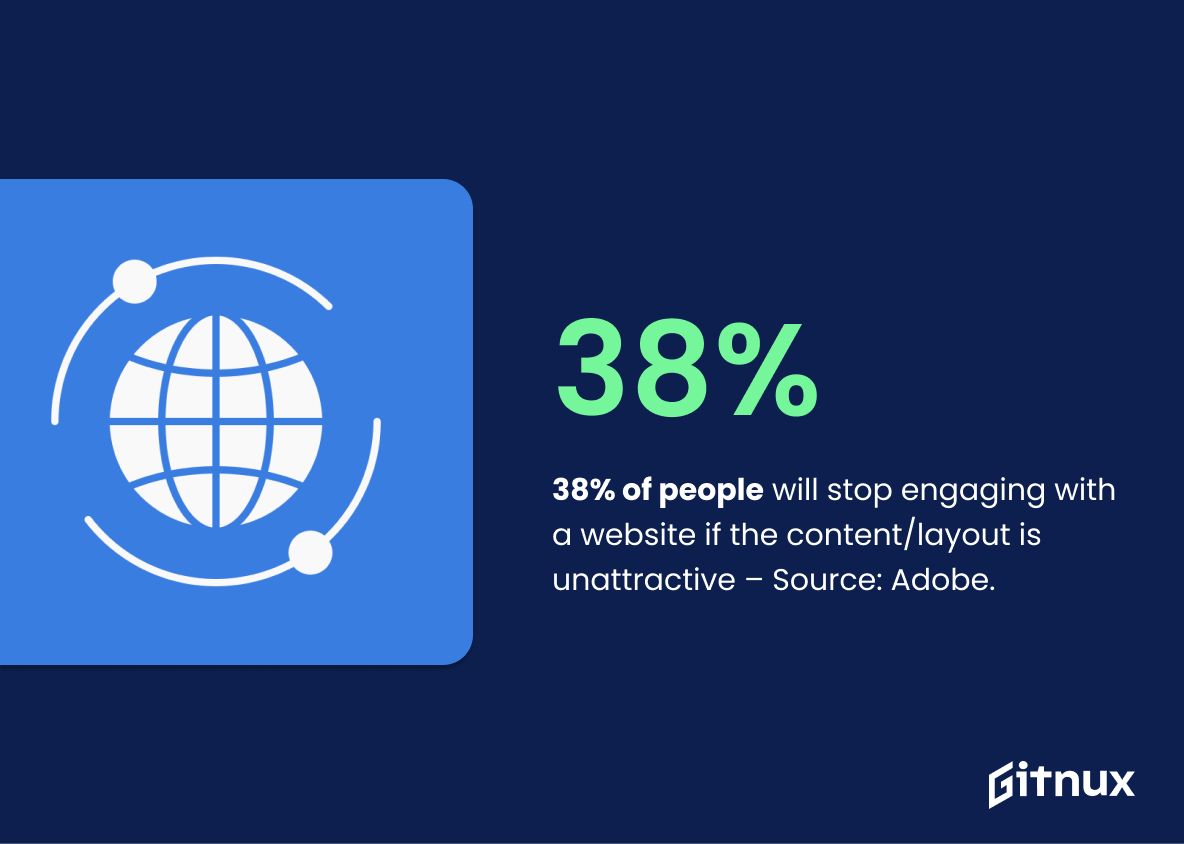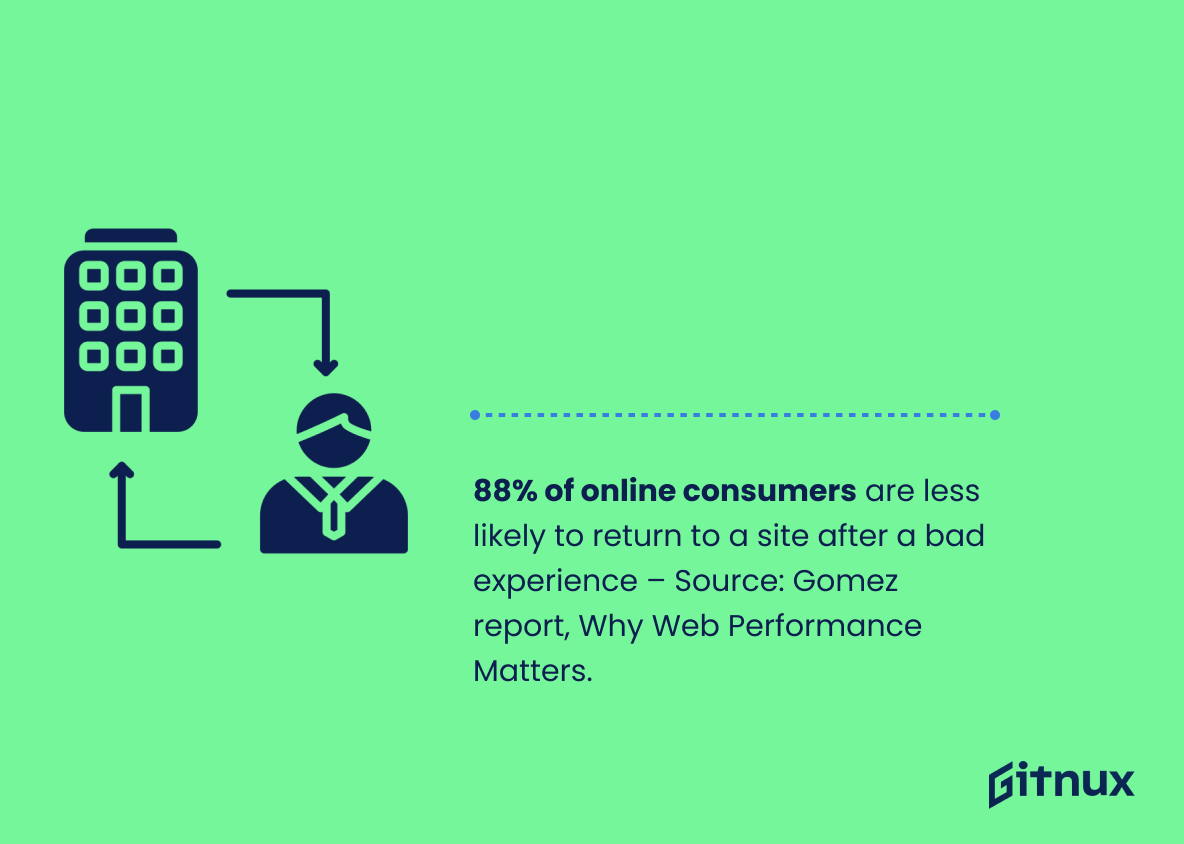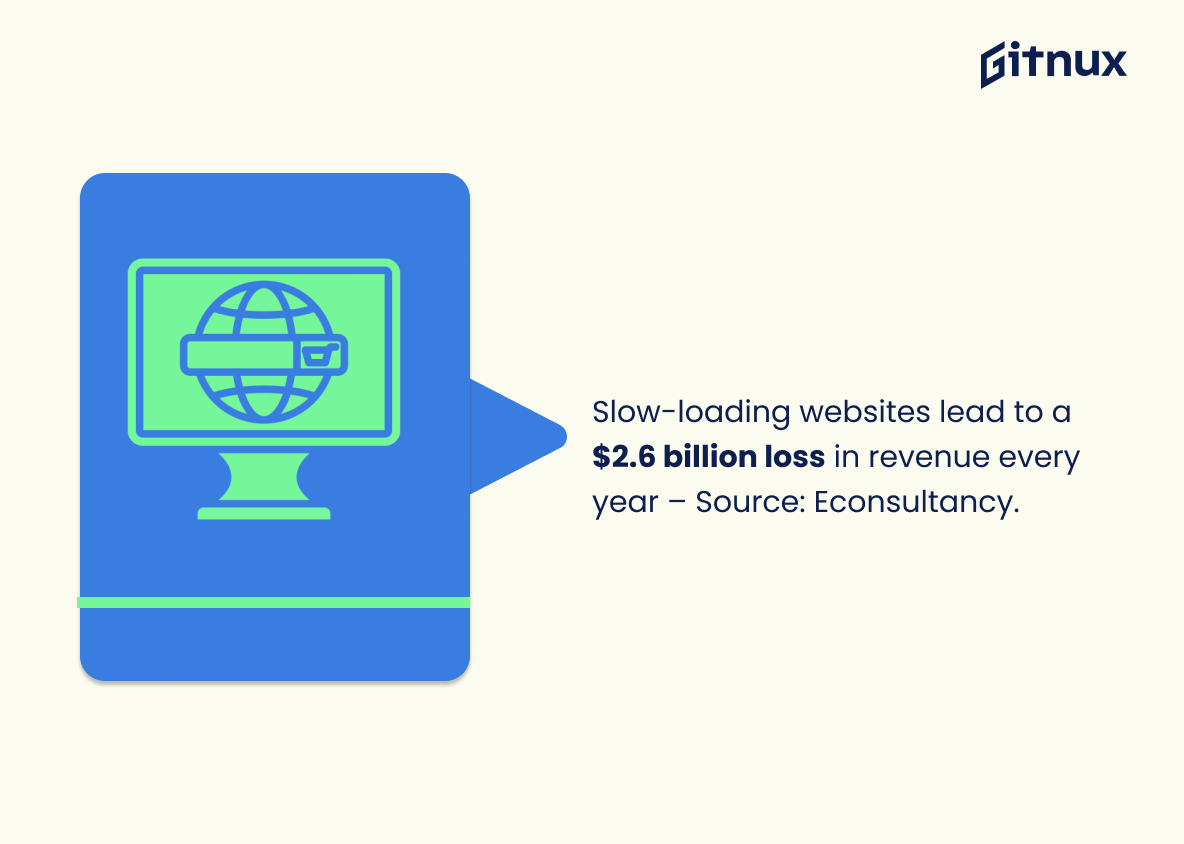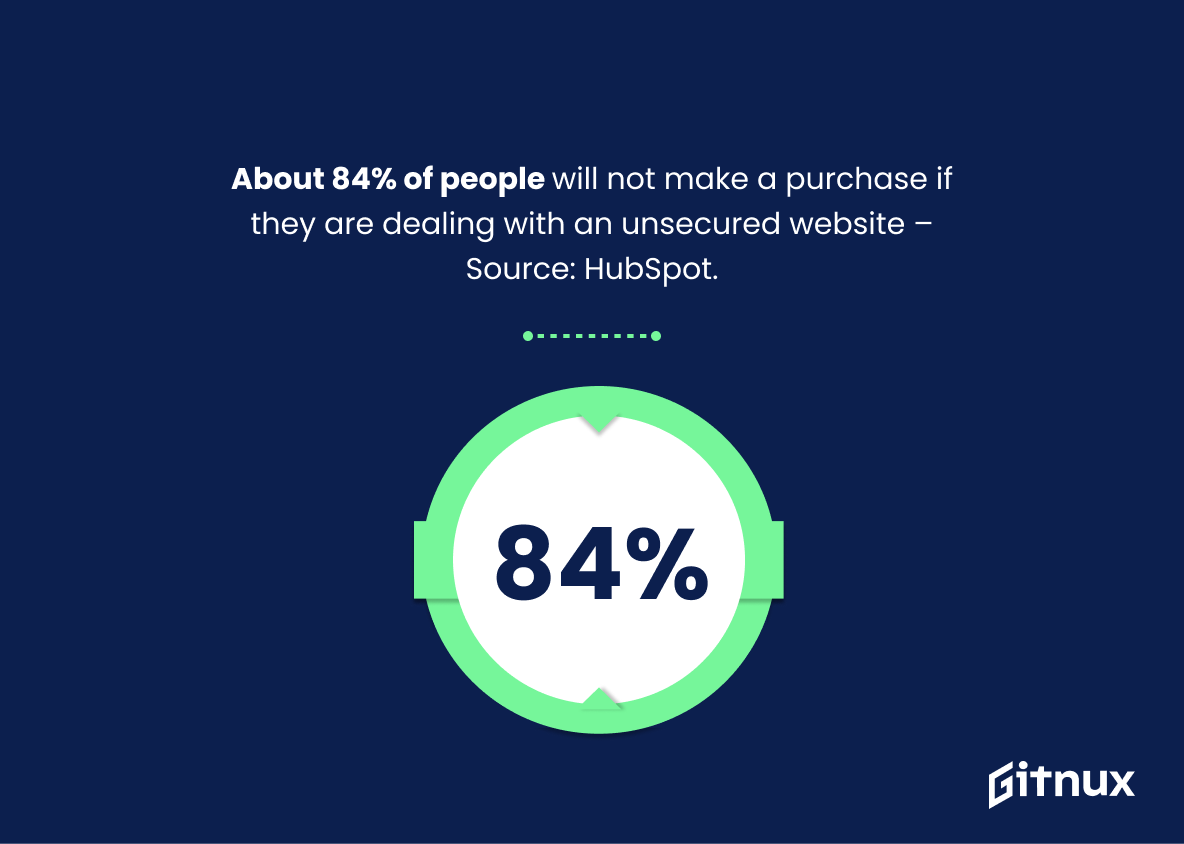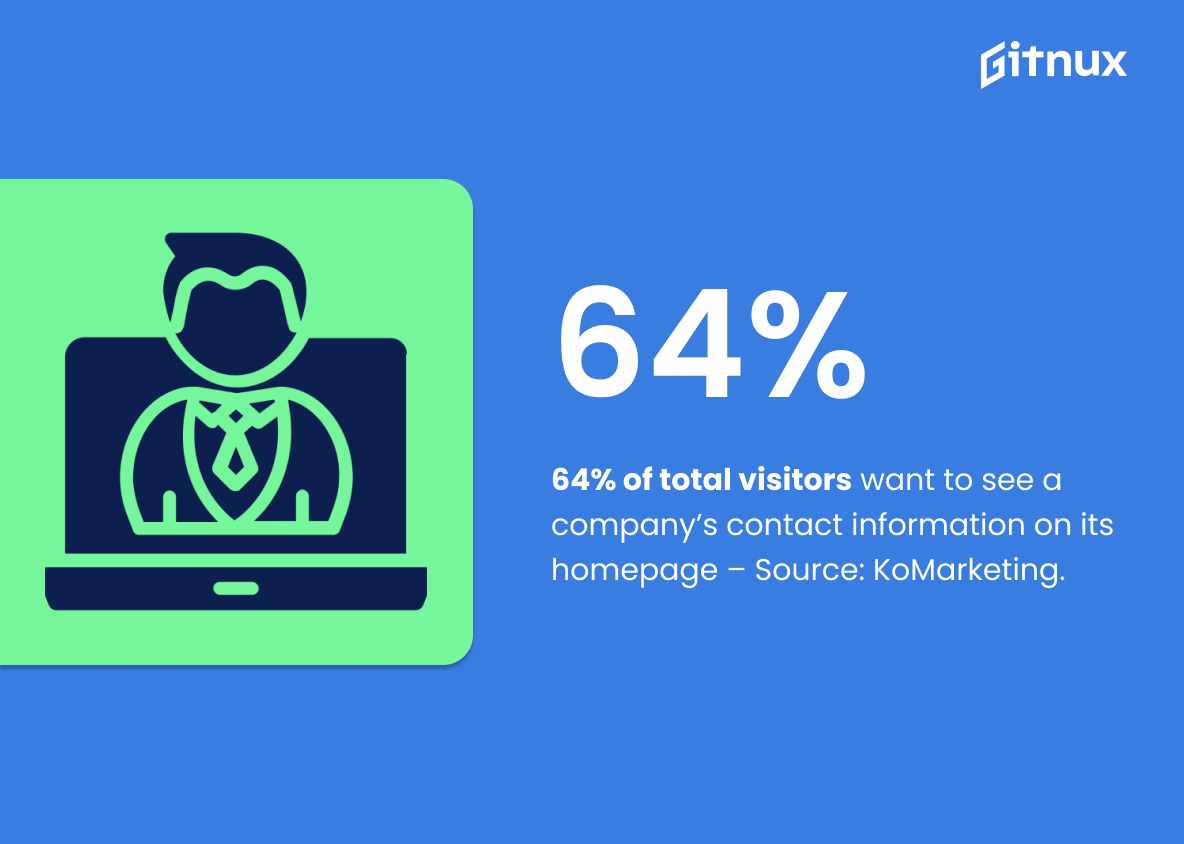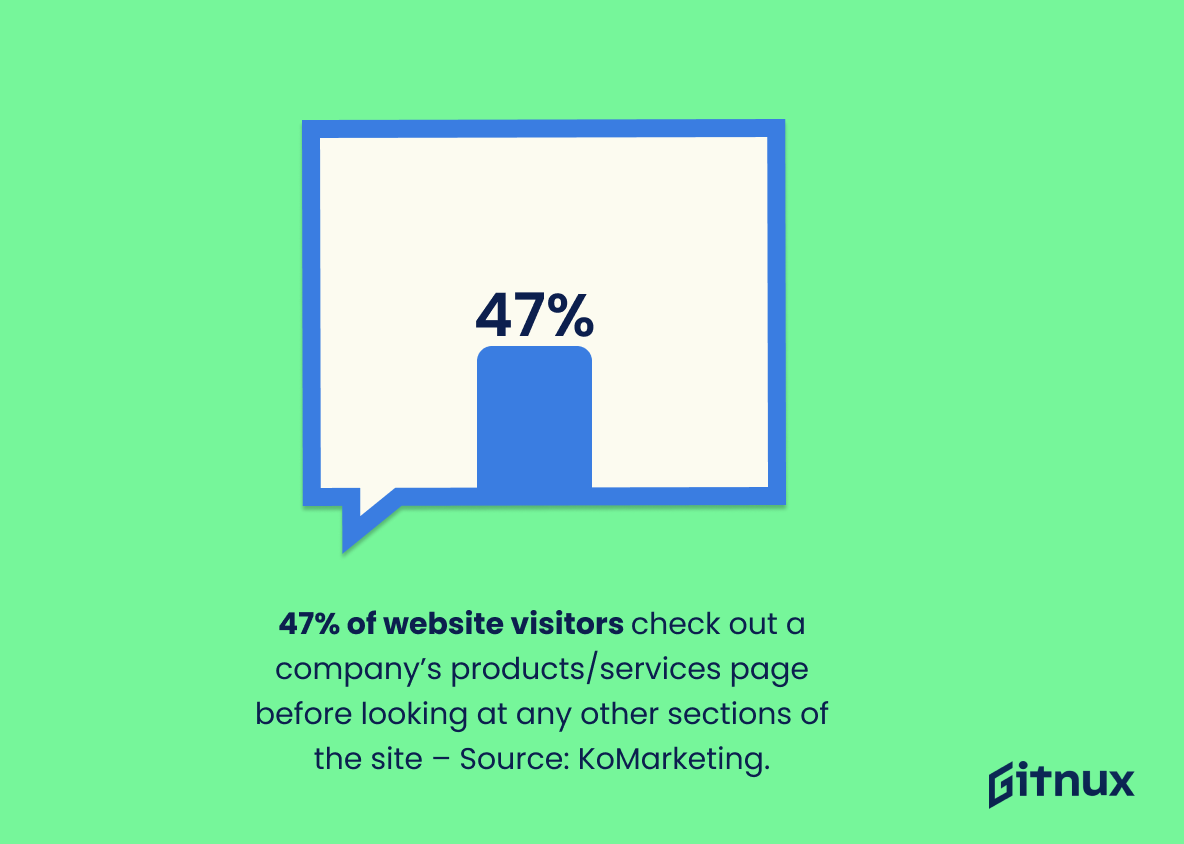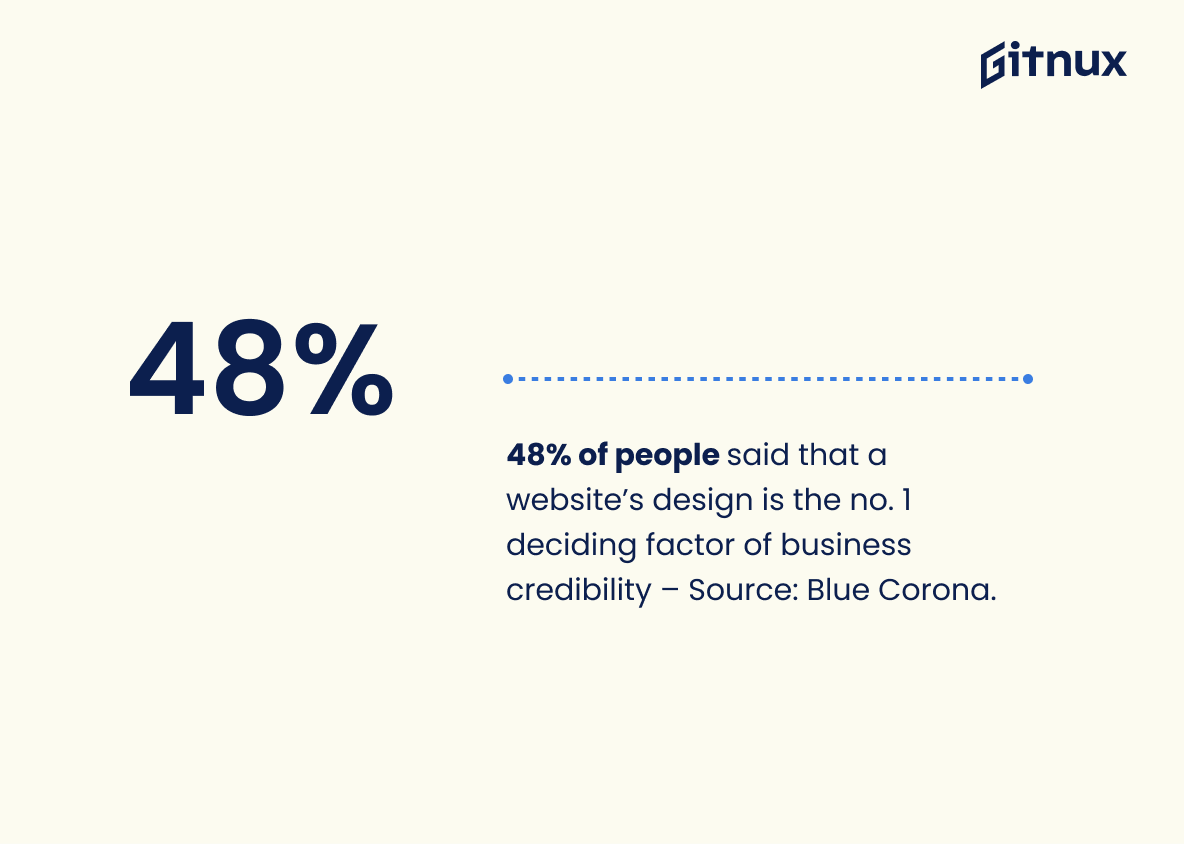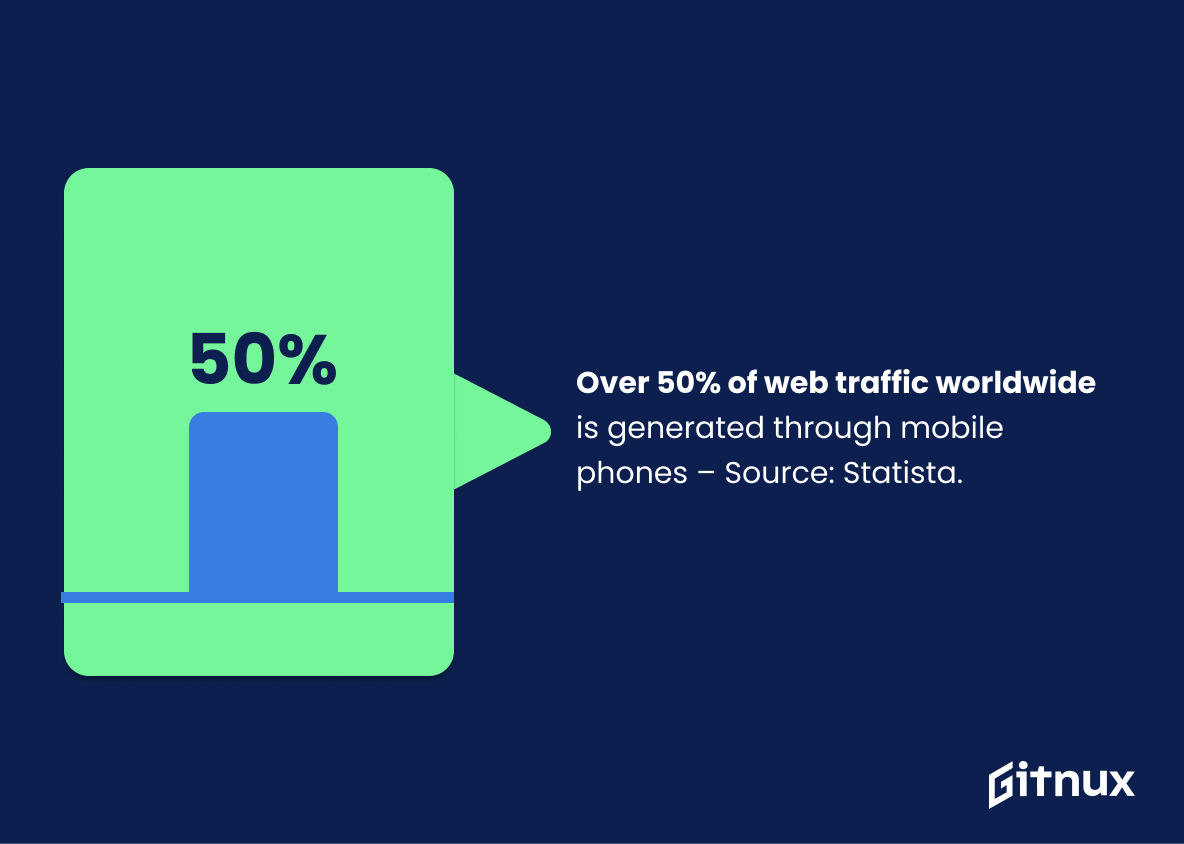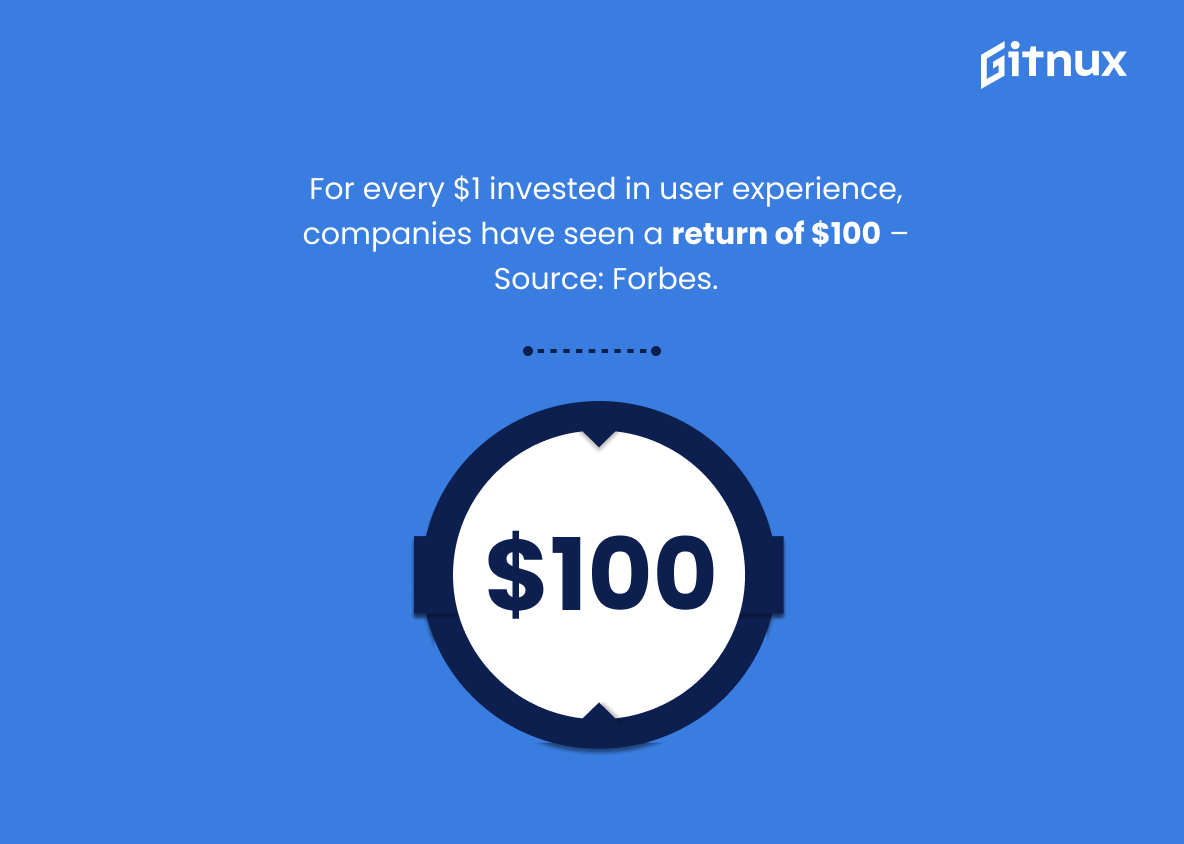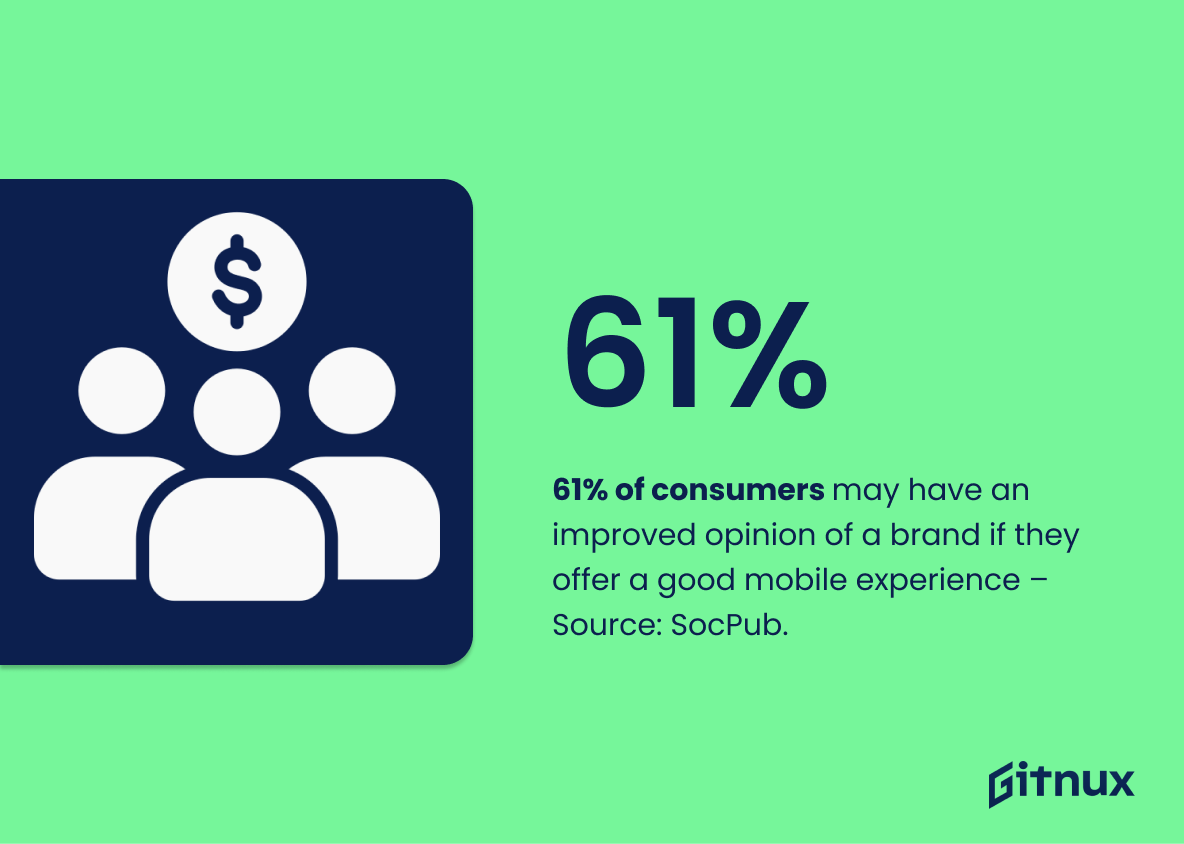In today’s digital-first world, an appealing, functional website is a cornerstone of any successful business strategy. But just how pivotal is effective website design to your business, and what statistical proof is there to back this up? This blog post delves into the captivating world of website design statistics, offering insightful information that will help you understand the indispensable role of impressive web design in enhancing user experience, driving traffic, boosting conversions, and ultimately, escalating business growth. Read on to discover the latest trends, facts, and figures that highlight why a well-designed website isn’t just an option, but an absolute necessity in our tech-savvy age.
The Latest Website Design Statistics Unveiled
38% of people will stop engaging with a website if the content/layout is unattractive – Source: Adobe.
In the rhythm of the digital dance, a compelling website design certainly takes the lead role. According to Adobe’s research, the spotlight shines on a damning statistic – 38% of users will abandon a page’s waltz if the layout or content fails to twirl to their aesthetic expectations. Weaving this figure into a blog post about website design statistics serves as a stark spotlight on the criticality of thoughtful and visually appealing design. It’s a reminder to readers and web designers alike to chisel the digital sculpture with an artist’s mind. Each fraction of that 38% represents potential customers, loyal followers, or soon-to-be fans, lost to unattractive presentation. Hence, it’s a clarion call to deliver not just information, but a holistic sensory experience to keep the digital audience captivated and engaged in the technological tango.
93% of people consider a website’s visual appearance as a key deciding factor in whether they make a purchase – Source: Sweor.
In carving out a perspective on website design statistics, this particular figure – “93% of people consider a website’s visual appearance as a key deciding factor in whether they make a purchase – Source: Sweor” – constitutes an essential cornerstone.
Gleaning insight from these numerical edifices, one appreciates the profound potency of a website’s visual appeal. It underscores, with striking clarity, how nearly all online users are swayed in their purchasing decisions by the aesthetic allure of a website. Functionality and content, although integral, assume a backseat, their influence shadowed by the delightful dance of appealing visuals.
An investment in excellent website design becomes not a matter of choice, but a digital imperative for businesses wishing to ensnare and turn potential clicks into active customers. Website aesthetics, accordingly, strike the chords of first impressions, comprehensibly guiding the symphony of user engagement and conversion rates. This emphasizes the fact that designers, striving towards profit maximisation, need to place visual attraction at the core of their strategic blueprints.
88% of online consumers are less likely to return to a site after a bad experience – Source: Gomez report, Why Web Performance Matters.
A blog post on Website Design Statistics ventures beyond the facade of creative elements to delve deep into user experience. The mentioned statistic, ‘88% of online consumers are less likely to return to a site after a bad experience’, forms a pivotal segment in this narrative. It underscores the repercussions of a poorly designed user experience, serving as an unforgiving reminder to designers, developers, and business owners.
In the online world, where options are limitless, even the smallest frustration could lead the online consumers towards competitor sites. This statistic, therefore, isn’t merely a number but an urgent call to action for website designers – to refine, redefine, and restructure their site functionalities. The focus needs to be on simplifying the navigation, improving the site’s loading speed, and optimizing for mobile devices. All in all, it shines a spotlight on the undeniable link between a website’s design, user experience, and the business’ bottom line.
Slow-loading websites lead to a $2.6 billion loss in revenue every year – Source: Econsultancy.
This particular statistic paints a vivid picture of the harsh economic consequences of slow-loading websites. When woven into a blog post about website design statistics, it succinctly emphasizes the primacy of loading speed as a core component of effective web design. Each fraction of a second’s delay compounds into a staggering $2.6 billion annual revenue loss, underlining the high stakes involved. This is much more than a mere web design issue – it’s a profound business concern capable of sinking or swimming entire enterprises. Clearly then, this static serves as a powerful distress signal, warding off complacency and urging relentless focus on loading speed optimization in web design strategies.
About 84% of people will not make a purchase if they are dealing with an unsecured website – Source: HubSpot.
Highlighting the astounding statistic that approximately 84% of consumers refuse to make purchases from unsecured websites, as reported by HubSpot, underscores an essential point for web designers. Ensuring stringent website security is not just about guarding against potential cyber threats. From the perspective of customer confidence and trust, it’s also about safeguarding business profitability. Web design isn’t only about aesthetics and user experience – it is also about building secure platforms where visitors feel comfortable proceeding with transactions. An unsecured website is akin to a leaky ship, no matter how beautifully it is crafted, it will inevitably sink due to trust issues, leading to a significant drop in potential sales.
64% of total visitors want to see a company’s contact information on its homepage – Source: KoMarketing.
In the panorama of website design, envisage a house with a desirable ambiance yet without a visible address. That’s precisely how a website without visible contact information on its homepage may appear to users. That’s why the slice of data revealing that 64% of total visitors long to see a company’s contact data on its landing page, according to KoMarketing, adds considerable nuance. A powerful testament to the importance of accessibility and transparency in website design, it reiterates that imagining website designs from consumer perspectives may yield the most authoritative results. Web designs, hence, must be fine-tuned to function as a bridge between the firm and their clientele and not act as a cryptic labyrinth.
47% of website visitors check out a company’s products/services page before looking at any other sections of the site – Source: KoMarketing.
Diving into the depths of this statistic unravels a treasure of insights for web designers and marketers alike. At first glance, it underlines the prominence of a company’s product/services page in capturing visitor interest. Nearly half, 47% to be precise, of all website explorers set a direct course for this page before venturing into other areas of the digital landscape. This predilection makes it clear that the product/services page acts as a critical first impression and a deciding factor in visitor engagement. Turning a keen eye to the strategic design of this section could therefore significantly amplify its magnetic pull, arguably leading to higher visitor retention, better user experience and ultimately more conversions – the golden trio every website strives to achieve. Hence, this captivating statistic not only reveals visitor behaviour and preferences, but also places an important jugular vein of website design in the spotlight.
48% of people said that a website’s design is the no. 1 deciding factor of business credibility – Source: Blue Corona.
Interpreting this statistic from Blue Corona illuminates a vital truth about the digital world: almost half of people hinge their trust in a business on the quality, attractiveness, and functionality of its website design. This viewpoint serves as a beacon of understanding for anyone crafting a blog post about Website Design Statistics. It highlights the essential role website design plays in not only attracting but also retaining visitors and turning them into loyal customers. In essence, a website’s aesthetic doesn’t just offer the first impression – it holds the key that can unlock or block the credibility door of a business.
Over 50% of web traffic worldwide is generated through mobile phones – Source: Statista.
In the exhilarating world of website design, the statistic revealing that over 50% of web traffic is generated through mobile phones serves as an illuminating beacon guiding web designers. It delivers an emphatic message: prioritize mobile-friendly designs. This trend of thumb scrolling over traditional mouse clicking represents a seismic shift, which elevates the importance of optimizing mobile user experience. Websites incapable of delivering a seamless mobile experience risk alienating a significant portion of users, half of them globally, to be precise. Consequently, astute web designers are embedding mobile responsiveness at the core of their strategy, recognizing the implicit value it offers. Thus, this statistic is not just a number, but a compass for navigating the ever-evolving landscape of website design.
For every $1 invested in user experience, companies have seen a return of $100 – Source: Forbes.
Unearthing the gold nugget that “For every $1 invested in user experience, companies have seen a return of $100”, it’s clear to see why a focus on user experience design has shot up like a rocket in the priority list for businesses, particularly in the context of website design. This powerful statistic, sourced from the leading business publication Forbes, paints a dazzling picture of impressive returns and unrivaled returns on investment (ROI).
In a digital world, where competition is rife and consumer expectations are sky-high, every detail, pixel, and interaction can sway the success or downfall of a platform. Investing in user experience no longer feels like an added luxury; instead, it has morphed into an essential survival strategy. It’s a crystal clear signal to any business aiming to shoot for the stars – those who prioritize user experience are effectively planting their own money tree, with dividends of $100 for each dollar spent.
Harnessing this data, and moving forwards informed by it, makes enormous sense for any company wishing to capitalise on the modern-day gold rush in digital experience. It not only amplifies the importance of strategic website designing but also reaffirms that user experience reigns supreme when it comes to garnering a significant return on investment.
61% of consumers may have an improved opinion of a brand if they offer a good mobile experience – Source: SocPub.
In the realm of website design, this salient statistic unearths a compelling story of consumer perception. It elucidates a clear connection between the quality of a brand’s mobile experience and the shaping of customer viewpoints. A whopping 61% surge in potential brand admiration stands at the ready, poised for capitalization by those effectively harnessing the power of proficient mobile web design. This further underscores the importance of intuitive, engaging, and above all, responsive design for websites viewed on mobile devices. Crafting such an experience has the potential to dramatically sway consumer attitudes, offering an unmissable opportunity to boost a brand’s favorability in the fiercely competitive digital marketplace. Dive into the world of website design – your brand’s reputation might just depend on it.
Conclusion
In the ever-evolving world of digital marketing, being aware of the latest website design statistics is crucial. Great design is no longer a luxury, it’s a necessity. Your website’s design can influence your online presence, customer trust, and, ultimately, your company’s bottom line. Remember that your website is your digital storefront, and subpar design can push potential customers away. Therefore, investing in a responsive, user-friendly, visually appealing website can lead to higher visitor engagement, retention, and conversion rates. Stay updated, adapt to emerging trends and maintain your website with a keen eye on user experience to thrive in the competitive online marketplace.
References
0. – https://www.www.statista.com
1. – https://www.www.sweor.com
2. – https://www.www.forbes.com
3. – https://www.komarketing.com
4. – https://www.assets.dynatrace.com
5. – https://www.www.adobe.com
6. – https://www.socpub.com
7. – https://www.blog.hubspot.com
8. – https://www.econsultancy.com
9. – https://www.www.bluecorona.com
